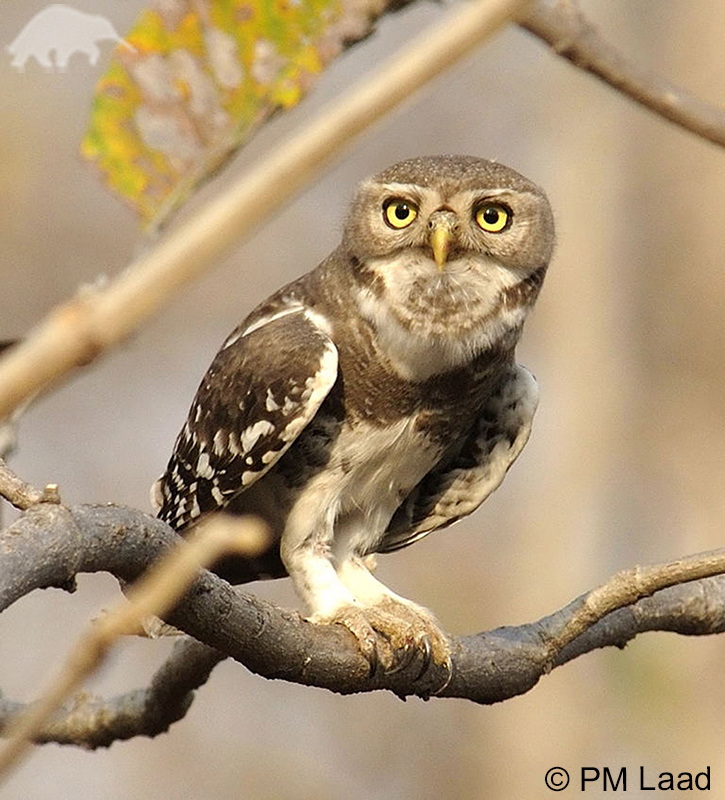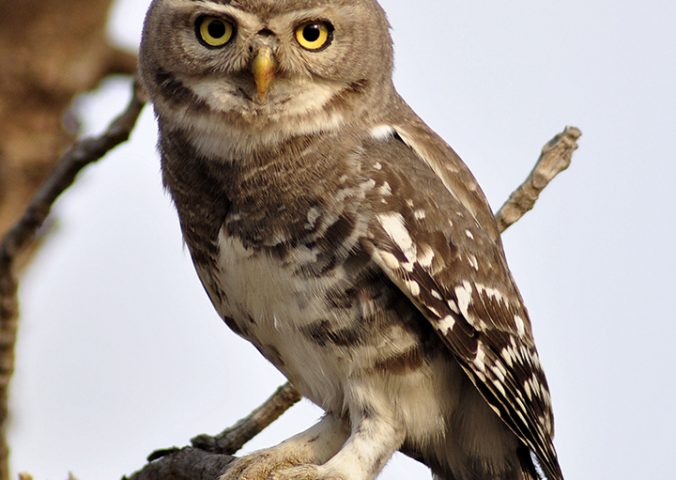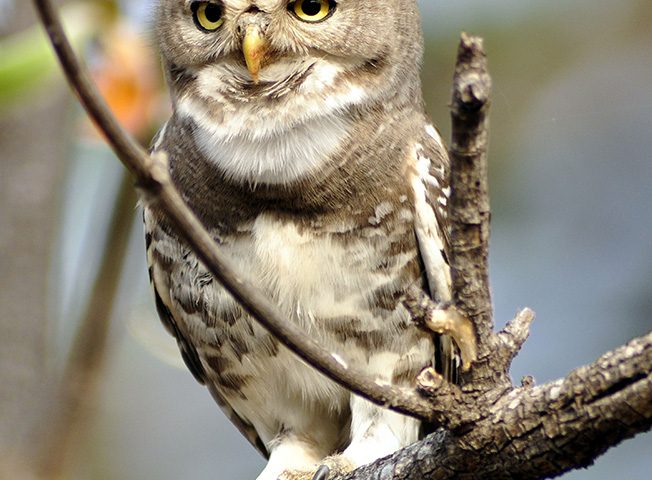About
The Forest Owlet has an extremely small and fragmented population in central India.
The species was originally placed with three others in the genus Athene, but has since been reclassified, now the sole occupier of its own genus Heteroglaux. Unlike most of its nocturnal relatives, this owlet is active during the day (diurnal), hunting lizards, birds and rodents in daylight hours. They have unusually large claws, which they use to catch prey sometimes twice their size. Previously feared extinct, this species was rediscovered in 1997 in the state of Maharashtra, 113 years after the last confirmed record. In 2000, 25 birds were located at four sites in northern Maharashtra and south-western Madhya Pradesh, including three pairs at Taloda Forest Range and seven pairs at Toranmal Forest Range. More recently, this species has been located in five sites in the western Satpura Range (Maharashtra) as well as being found in Burhanpur and Khandawa. The protected Melghat Tiger Reserve in Maharashtra is the species’ stronghold, with over 100 individuals having been recorded there by 2005. Whilst surveys continue to discover more individuals, habitat fragmentation caused by the continued loss of deciduous forest, through illegal logging and expanding agriculture, is likely to result in a further decline in this species.
- Order: Strigiformes
- Family: Strigidae
- Population: 70-400
- Trend: decreasing
- Size: 20-23cm
EDGE Score
Distribution
The Forest Owlet is endemic to central India.
Habitat and Ecology
It is thought that this owlet prefers subtropical and tropical dry deciduous forest, but has also been seen in moist deciduous forest or dense jungle. Unlike other owls, it is diurnal and crepuscular. They mainly feed on small prey animals that live in understorey vegetation within the owlet’s habitat, such as lizards and also amphibians, small birds, rodents and large invertebrates like grasshoppers.


